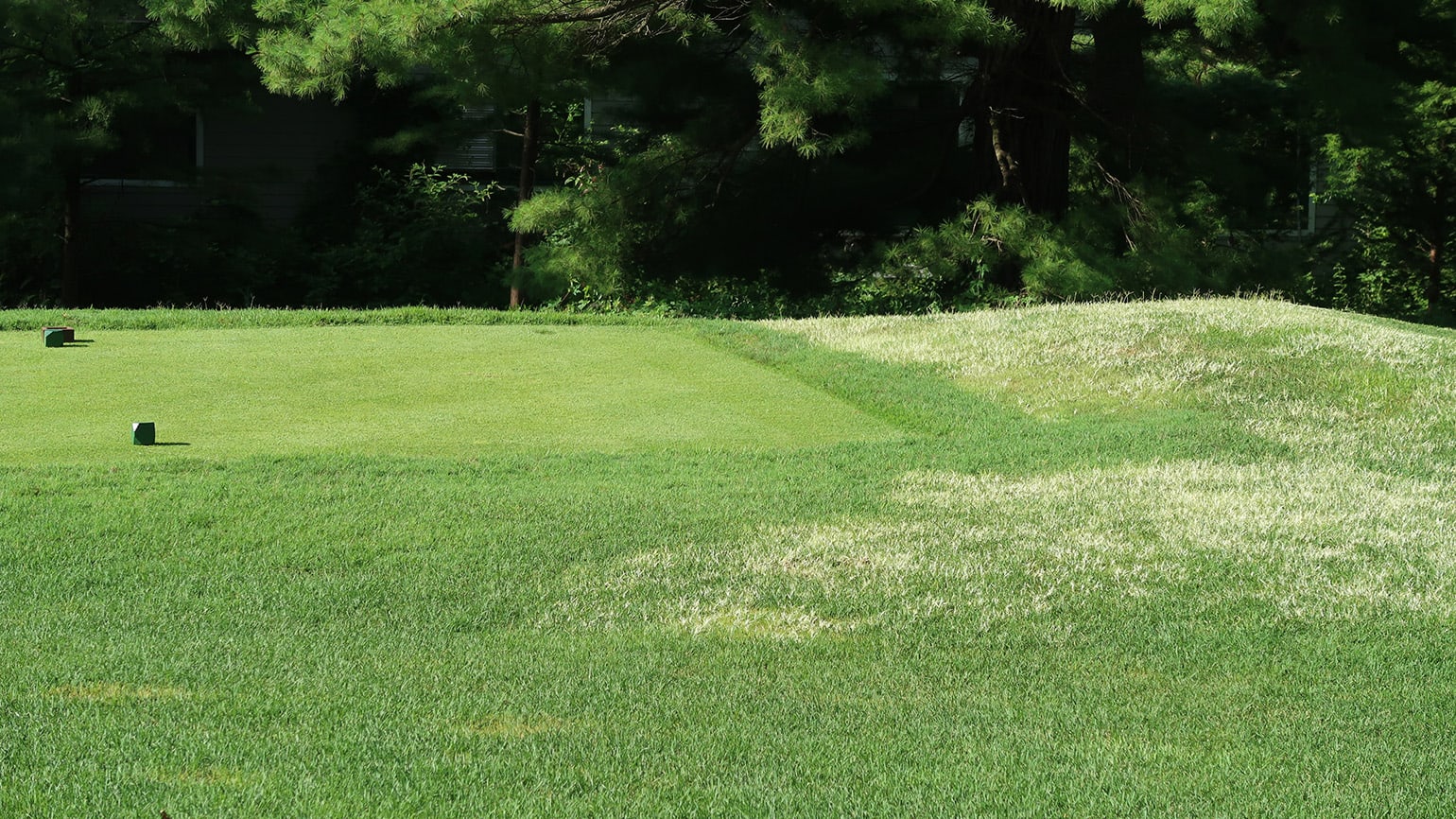USGA – Central Update – Bleaching Bermuda
Late August and early September are a critical point in the golf season because cool-season turf is typically under less environmental stress because of the more favorable weather. Now is the time to switch gears from survival mode, to implementing programs to improve the overall conditioning of the course. For those looking to reduce bermudagrass populations in cool-season roughs, now is the time for applying treatments. A popular treatment is using the herbicide Pylex™ (topramezone), which can suppress bermudagrass so the populations of Kentucky bluegrass, tall fescue, fine fescue and perennial ryegrass can increase.
Suppressing bermudagrass in cool-season roughs will require sequential applications. A combination of topramezone and triclopyr along with a methylated seed oil will provide the best results. Three applications of these products should be made three weeks apart beginning in the late summer. A bleaching response from the bermudagrass is an indicator the applications are having their desired effect. Make sure to communicate with golfers and other course officials how the bermudagrass will appear, so they understand this was done intentionally.
This is not the type of treatment where one season’s worth of applications will correct the issue. A bermudagrass suppression program requires a commitment to making these applications every year because the benefit is from continued suppression. If funds are not available to treat the rough on a large scale, map where bermudagrass populations are the highest and spot treat those areas.
This article was originally written with USGA by Zach Nicoludis here.
Central Region Agronomists:
John Daniels, agronomist – jdaniels@usga.org
Zach Nicoludis, agronomist – znicoludis@usga.org
